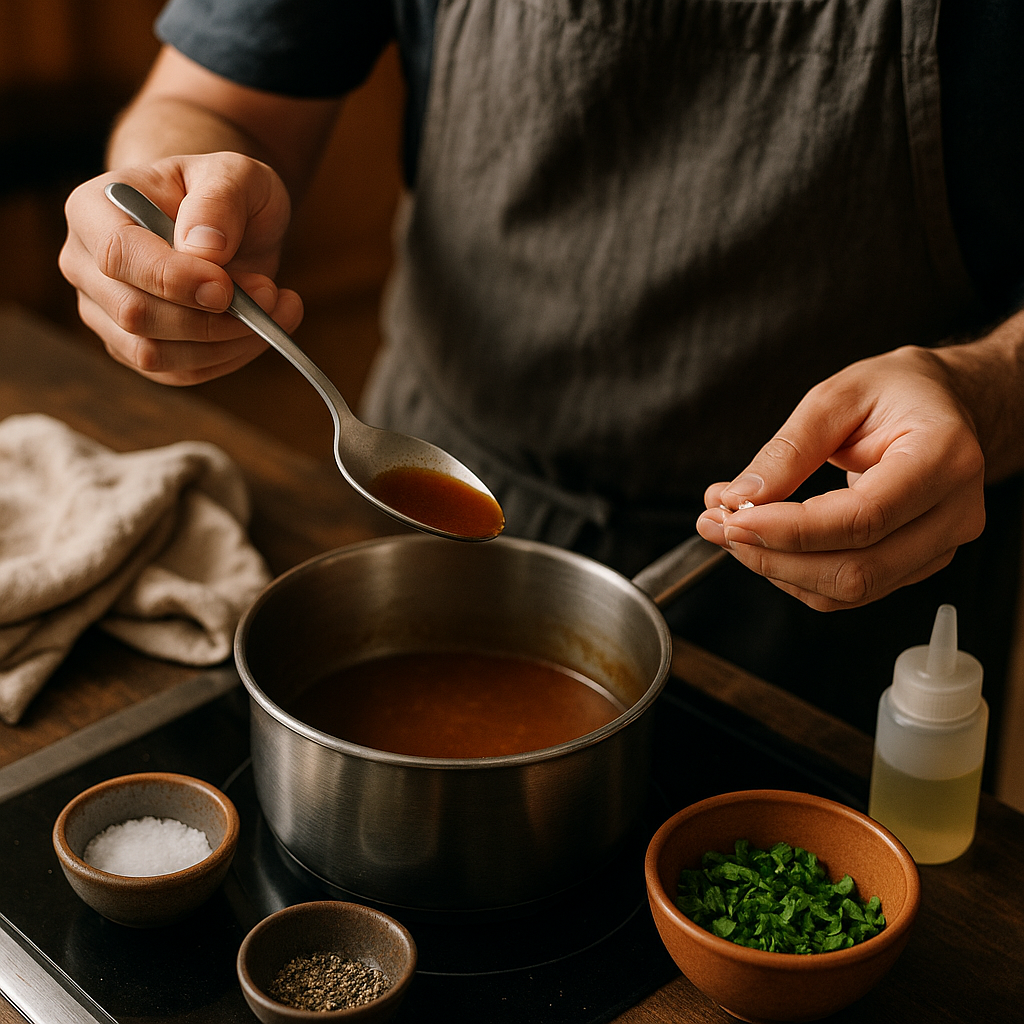
Seasoning is rarely perfect on the first try. Even professional chefs rely on tasting, re-tasting, and making thoughtful adjustments throughout the cooking process. Here’s how to sharpen your tasting skills and troubleshoot common issues in real time.
Step-by-Step Tasting Process
- Taste with a clean palate (and not when you’re hungry).
- Ask: Is it salty, sour, spicy, bland, sharp, rich?
- Take small bites with rest time between tastes.
- Note what’s missing—not just what’s wrong.
Common Problems & Fixes
- Bland: Add salt or umami (miso, soy sauce)
- Flat or heavy: Add acid (lemon, vinegar)
- Too sharp: Add fat (cream, oil)
- Too spicy: Stir in yogurt, butter, or coconut milk
- Too salty: Add potato, rice, or a splash of cream
Build Your Adjustment Chart
Make a simple grid like this to keep on your fridge:
- Too bland → salt or soy sauce
- Too fatty → acid or chili
- Too spicy → dairy or sweetness
- Too dry → olive oil or broth
Keep practicing! Over time, your palate will get sharper and your confidence in adjusting dishes on the fly will grow.
Want a shortcut? Build better flavor from the start using our Spice Blend Calculator.